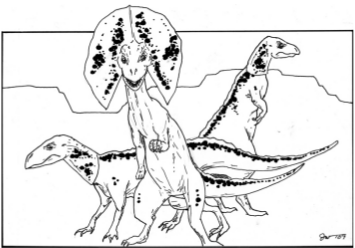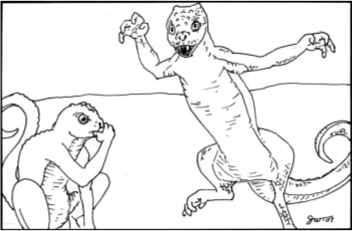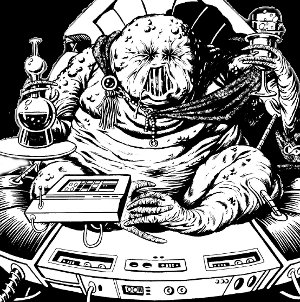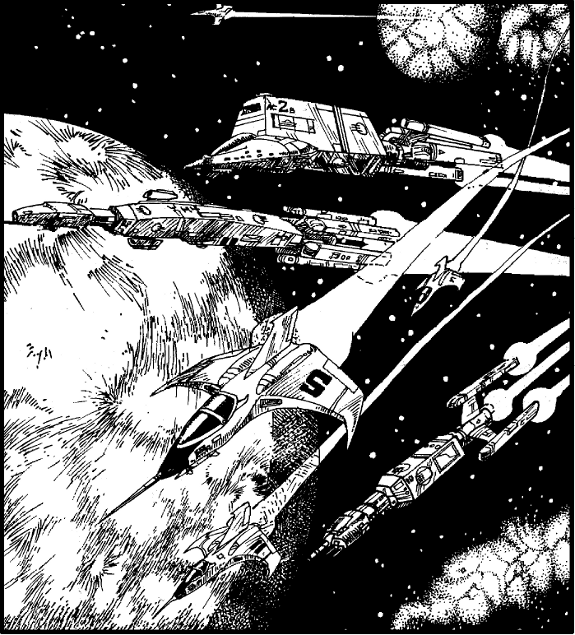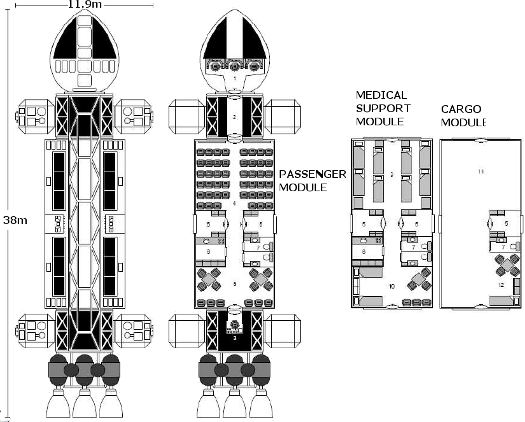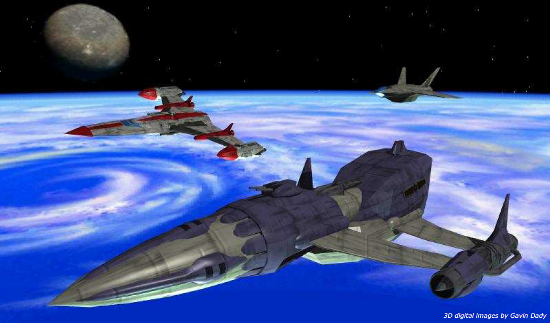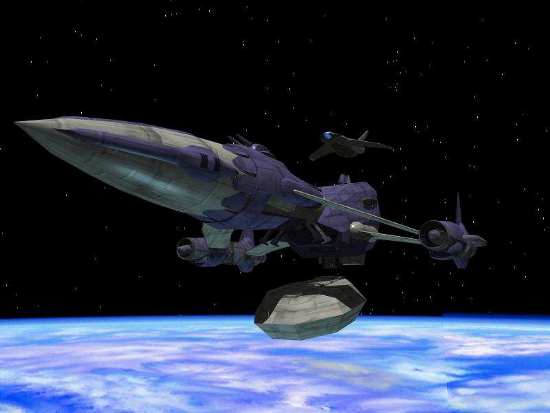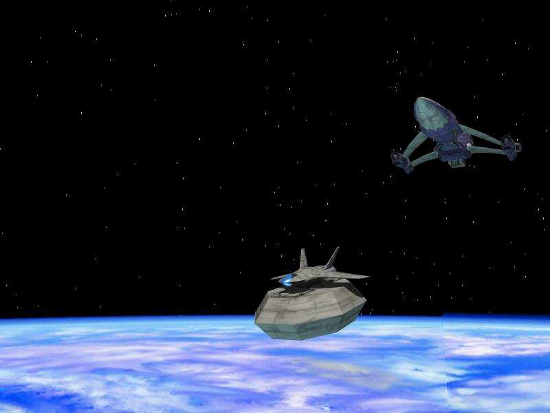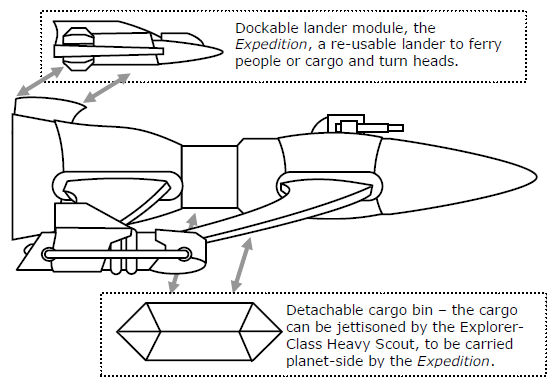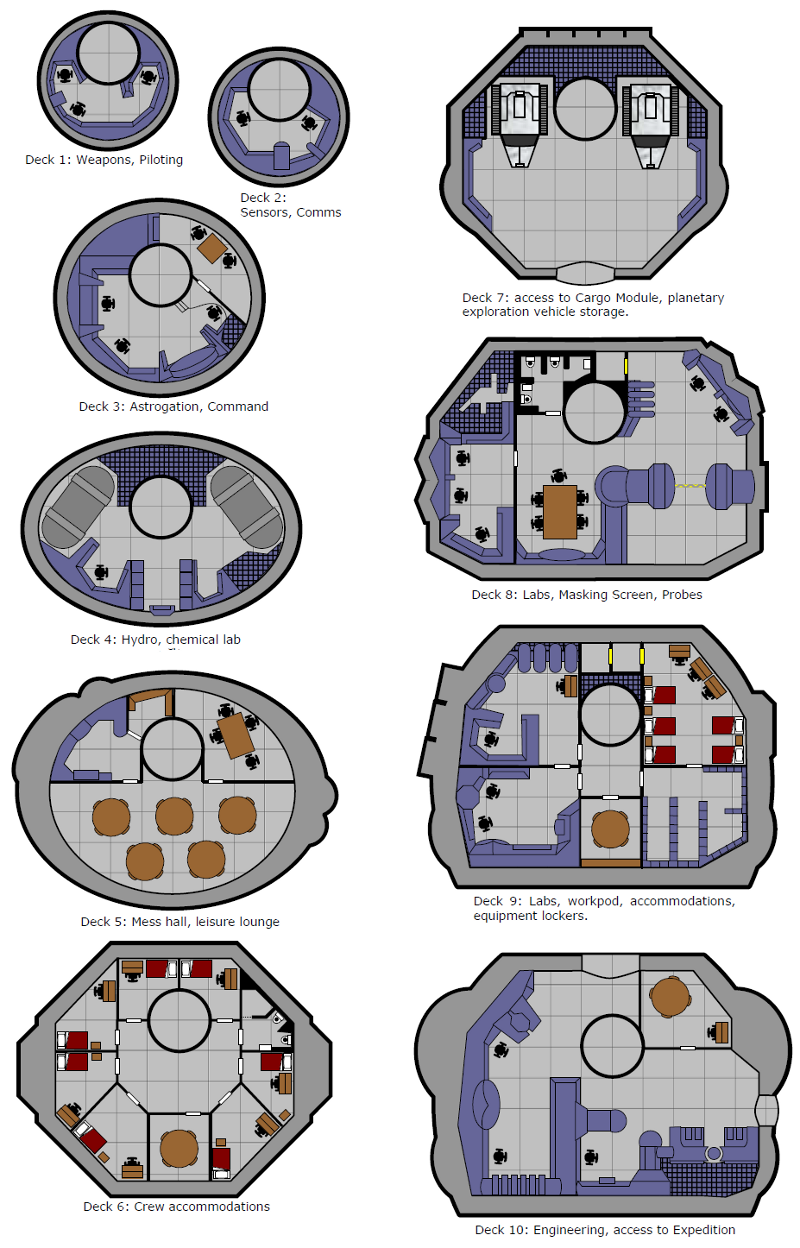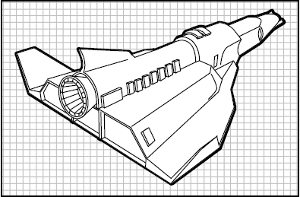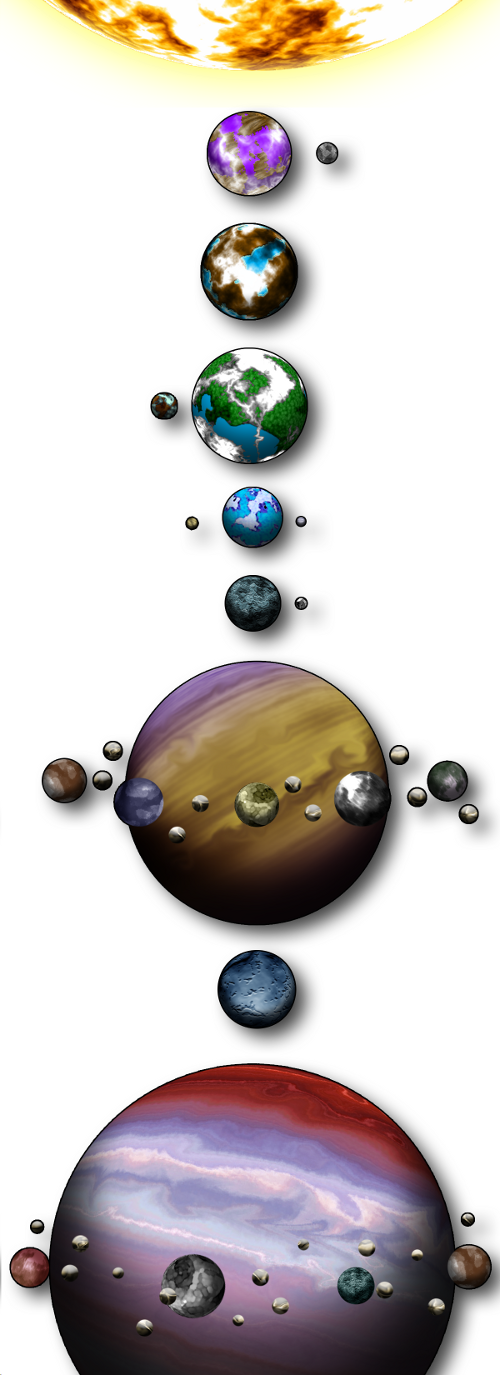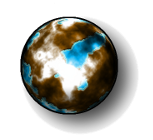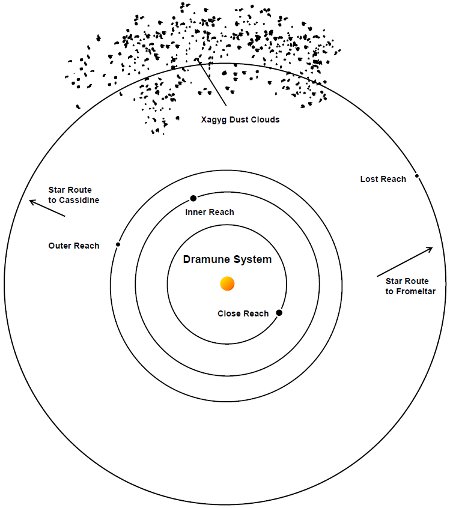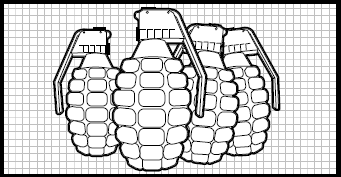List of articles.
The Zethra
The ZethraAn NPC race for the Star Frontiers gameby Ed GreenwoodDragon Magazine, #84, pg. 76From Pan-Galactic File 009887615AR211Open:
This report is filed upon completion of a preliminary study ordered when Agent 00969H "Quillanson" asserted that the being Hhon of Prenglar, Stulta of Dramune, and Mlaqaq of Truane's Star were common members of a single race. Questioning of these individuals, and the being Urloth and Vrendu of Cassidine, has yielded little information, save that all, though they have no detected regular intercommunication, think of themselves as Zethra, and originated on a single, unknown planet beyond the borders of the Frontier sector in the direction of the Xagyg dust clouds.
As far as can be determined, the Zethra (the name is used in singular and plural forms) derived the theoretical knowledge of interstellar spacetravel mechanics, but lacked heavy metals with which to construct spacecraft (Ref: Security File Catalogue, "Zethra Briefings"). At length, they acquired a derelict space vessel, thought to be an abandoned Vrusk "Sarsk" explorer starship (Ref: Security File Catalogue, "Vrusk Explorations, Xagyg Sector"), mastered its controls, science, and maintenance, and several hundred Zethra set out to explore surrounding space with it.
Information as to their precise route and adventures remains undisclosed, but the ship has apparently moved out of the sector, after leaving an unknown number of Zethra on various Frontier worlds. Such planetfalls seem to have been by choice, rather than by any military or colonization plan, but the intractable and enigmatic nature of the Zethra has thus far limited the information gathered on this possibly dangerous race. Agents are warned that the Zethra themselves constantly gather information, possibly for future military use, and news of a sensitive nature should on no account be allowed to reach them.
Agents are also warned to beware the personal powers of such individuals when encountered - an excerpt from a report filed by Agent 00616Y "Umbryl," ordered to question Urluth of Cassidine, is appended:
"The alien was initially approached by Agent 00982H 'Samber' and a recording robot 00151R 'Tencode' Level 5 modified Security Type, and it seemed intrigued. It accompanied them to Brazil's Hubstar Saloon, but upon seeing the follow-up guard take position behind it - two Vrusk, four Humans, and a Dralasite, all field agents of some experience and good reports - the alien grasped both Agent 00982H and the robot and appeared to shock them with such force that the Human agent collapsed and the robot went haywire, dancing about jerkily on the spot.
"It then forestalled the guards' attack by transmitting a jolt through the metal floorplates of the Hubstar's lobby that stunned all seven into unconsciousness. An electrostunner fired by myself from within the Hubstar appeared to do it no damage, and it touched the robot again. The robot spoke, obviously to me and at the command or instigation of the alien: 'Don't try this again. I go now. Do not follow.' Contact with my superior, Agent 00812D 'Asimit,' resulted in orders to do just that. Report concludes with film and robodata…"
Zethra
Physical appearance and structure
Zethra are rubbery, ball-like creatures with high elasticity and durability, possessing a number of tentacle-like appendages. Six of these are retractable, strong, dexterous arms, capable of manipulating both large, heavy objects and tiny, intricate controls or items; their length varies from one to four meters. These project from the body in a ring about its widest circumference. A ring or "crown" of four small (.5m long) sensory tentacles projects from one end of the ball, parallel to (but separated from) the rings of arms.
Zethra are a mottled greenish-grey with a few orange patches, but they can alter the pigmentation of their skin cells by rearranging internal supplies of chemical substances, to blend with their surroundings. Although they are able to match all color hues exactly, they cannot alter their low reflectivity or the soft texture of their skin, and so cannot gleam or become rigid.
Of the five major spacefaring races, Zethra most closely resemble Dralasites internally, due to the amorphous nature of their body parts. A Zethra's brain is located beneath its crown; feelers from the brain's green, oval mass extend down throughout the rest of the body like countless tiny threads, directing body activities and supplying the necessary energy. Energy storage nodes, resembling star-like clusters of green threads, are located about a Zethra's body. They can be moved by the brain to avoid loss, if particular body areas are threatened or injured. Zethra move by rippling and rolling their ball-like bodies, pushing themselves along, or pulling at their surroundings for propulsion.
Zethra are hermaphroditic. They mate by tentacle contact, and one or both partners may give birth by budding. A "bud" grows in a bubble-like shape from the skin wall of the parent, until at length it breaks free to become a miniature, independent, and fully capable Zethra.
Particular information on Zethra:
Average size: 1.5m diameter
Average mass: 60 kg
Average lifespan: unknown; thought to be 400+ years
Reproduction: hermaphroditic, budding
Body temperature: 4 C; wide tolerance of changes in environmental temperature
Senses
Zethra sense heat, light, and electrical energy, and can distinguish variations in the same with great sensitivity through their four "see-feelers," or "seefers" (as Humans call these organs). They can also sense vibrations and energy fluctuations through parts of their bodies, but entirely lack a sense of small. Like Dralasites, they also lack the ability to see or appreciate colors, detecting them only as differences in shade.
Speech
Zethra have no audible speech, instead using a rapid, complex language of electrical energy pulses with which they communicate with other Zethra through any good conductor (e.g. ferrous metals), or through direct seefer contact. Zethra can communicate with Humans, Dralasite, Vrusk, and Yazirians through a code-like series of "clicks"; they "hear" sounds in return by sensing and interpreting air vibrations.
Zethra create "clicks" by silently tapping someone with a tentacle, or by banging on a surface with a held object. They may also pass electrical pulses or mild shocks through conductive materials (a painful form of communication!), or cause a machine to emit sounds by the use of electrical impulses. Any Zethra who has practiced with a polyvox can cause it to emit a message through the use of energy pulses. They appear to comprehend unfamiliar languages rapidly and with ease.
Society and Customs
Zethra appear to be very self-interested and amoral. Rare in the extreme, they seem to lack any organized society or racial goals, although they will readily cooperate with their own or with other races for rewards. Zethra desire supplies of energy, or organic matter with which to produce it.
Zethra also like information, and appear fascinated by trivia from all races and planets: odd bits of poetry, music and lyrics, catch-phrases, rumors, and apparently inconsequential facts. Such information is used for personal enjoyment and to achieve some unknown goal or future scientific development, but they will divulge nothing of their personal plans or preferences. All information can be retained perfectly for later recall and use.
The few Zethra encountered have readily joined Frontier life. As noted above, they appear to have come from a planet in an unidentified sector, spreading through space by using a derelict spacecraft built by Vrusk, which they found, studied, and then piloted by use of their special abilities. They do not appear to have had the materials necessary to construct their own spacecraft.
Attitudes
Zethra are not allies of any particular race, and refuse to cooperate with either the Sathar or any UPF organization, such as the Star Law rangers, the Pan-Galactic Corporation, or the smaller interstellar companies. Their true feelings are difficult to identify, but they seem to get along with all creatures who do not hinder their activities. Zethra do not appear to understand humor on the part of any creature. Rarely offended by the words or deeds of others, they are commonly thought of as emotionless. They can, however, become the friends or enemies of individuals of other races.
Special Abilities
Zethra can, at will, consume organic matter and convert it to energy, using it for continued activity, healing, and rejuvenation. This is done by some inexplicable natural process which remains a mystery to Frontier scientists of all races, even after exhaustive physical and field examinations. Zethra can store such energy in internal battery-like organs, using or releasing in when necessary to move, think, act, manipulate items, or as a weapon against other creatures.
An adult Zethra can store 220-440 SEU in its body, and requires approximately 20 SEU daily for movement, thought, and functional stability. Prolonged combat, complex mental effort, and the healing of injuries can double a Zethra's daily energy consumption. Zethra can heal minor wounds by resting in the normal fashion, or by releasing energy (50 SEU will restore one lost hit point). This represents a return to body stability.
Lost limbs or body organs will regenerate very slowly; a tentacle, for instance, takes 3-6 months to be replaced, and a seefer 1-4 months. Given enough time and food, a Zethra can always rebuild itself so long as most of its brain and at least one "storage-star" cell cluster survives. It will patiently absorb all organic matter around it until able to regrow the damaged parts of its body.
It must be emphasized that Zethra can only absorb organic matter, and will convert it entirely to energy with few by-products. Different materials will, of course, yield different amounts of energy (live intelligent creatures seem to yield the most energy, per given amount of mass, though Zethra will refrain from "eating" companions or obviously intelligent beings unless such beings are enemies).
Zethra can also transmit energy by contact, with great precision, releasing up to their current total SEU, minus 25, in any turn. These pulses can activate or deactivate computers, security systems, and robots. The pulses will duplicate the effects of throwing the "on" switch, or of giving certain command words; they may also simply blast or jolt the machinery past the point of its safeguards. Unfamiliar equipment and large computers often cannot be knocked out in such a manner, but a Zethra can always cause a robot to malfunction by a discharge of 100+ SEU. A Zethra who is familiar with a scanner, security lock, or related device will not hesitate to disable it if it is so inclined, regardless of the wishes of other creatures.
A Zethra discharge is less potent than a beam weapon, doing 1d10 damage per 2 SEU expended. They can elect to put more energy into a given attack, so that a cornered Zethra could well slay half a dozen or more opponents. Zethra discharges must be by the direct contact or through a metal conductor (which reduces damage by -2 per meter of conductor separating Zethra and victim). A Zethra can expend 2 SEU to stun as an electrostunner does, but if a target appears to be protected by an anti-shock implant the Zethra may increase its next attack jolt to 14 SEU, sufficient to both overcome and destroy the implant. A gauss screen can stop a Zethra jolt, but will usually fail under repeated attacks; Zethra cannot burn out such a defense, but know their limited power supply.
Zethra are immune to all electrical and radiant energy (i.e., laser) attacks, and can drain a powerclip, beltpack, or backpack at the rate of 10 SEU per turn. Laser, electrostunner, stunstick, and shock glove attacks all provide Zethra with energy, rather than damaging them. They absorb 10 SEU per turn given to them by the weapon attacks, conducting away what cannot be absorbed. Fire and sonic attacks to half-damage to them. Electrical creature attacks (such as those of the Rogue Crystals found on Vulturnus) do no damage, and are absorbed in the same way weapon attacks are. Physical attacks do full damage.
For example, if three Star Law marksmen with laser rifles shoot a Zethra with their dials set to 20 SEU, they would do no damage to it, but would instead give it 10 SEU of additional energy (the rest being channeled away). The Zethra could conduct the excess energy to the marksmen or another target through a metal floor, while engaging in some other activity.
Zethra can also serve as a power supply for beam weapons, defensive screens, and machinery wielded by themselves or by others. Contacting the necessary powercords with the tips of their tentacle-like arms, they will often recharge the equipment of encountered strangers in return for food and gossip.
Experience
A Zethra's perfect memory, inquiring mind, and reasoning intellect aid it in its understanding of the manufacture, handling, and repair of machinery and mechanical tools or aids. This ability is similar to a Vrusk's Comprehension, but is effective only in dealing with objects and mechanical thinking, not in social dealings. This allows a Zethra to add 1d10% chance of success to its success rate (in addition to its skill level) when using Technical skills.
Zethra Ability Modifiers
Zethra NPCs are created in the same manner as characters normally are, according to the Star Frontiers game rules. The base ability scores are altered by applying the following modifiers:
STR/STA: -5
DEX/RS: +5
INT/LOG: +5
PER/LDR: -5
Zethra Movement Rates
Normal rolling (=walking): 15 m/turn
"Scrambling" (=running): 35 m/turn
Average movement per hour: 6 km
Consider Zethra movement as "Slithering" for application of Terrain Effects.
Additional Data
Zethra may use all tentacles with equal facility; they have no "handedness." They also lack a backside, and can move in any direction with equal ease, rarely losing control in weightless conditions.
Zethra cannot be stunned, but are otherwise affected by non-electrical beam weapons as noted above. They can bounce as effectively as other creatures leap, but are affected by wounding, falling, and explosives. Zethra swim at the same rate as the other races, but lose no stamina points until their current SEU is 40 or less (then they lose 5 STA per 30 minutes). Absorption of aquatic lifeforms will prevent SEU loss. Water transmits Zethra jolts poorly: -3 points of damage per 10 meters distance, but any creature within the jolt's effective radius in contact with the water cannot avoid damage.
Zethra can tolerate a wide range of atmospheric pressures (though not the vacuum of space) and absorb any needed materials from surrounding gases through their skin. They have no lungs, and don't require oxygen or other specific gases. They cannot drown unless drained of energy and imprisoned underwater with no food available.
Inert ("noble") gases do not yield the materials Zethra need, but they can tolerate them for short times. Poison, smoke, or doze grenades will not affect Zethra. Stimdose, Staydose, and power screens have normal effects on them, however.
Zethra cannot wear defensive suits, but can wear belts, with pouches, linked from the base of an arm around the curve of their bodies to the base of another arm. In this manner they can carry screens and other items. Some Zethra have ID cards issued by local authorities to keep track of their movements and activities, but Zethra have no distinctive Personalized Recognition Attribute (such as a fingerprint or voice pattern).
Referee Notes
The PSA of Zethra are always Technological. Zethra are always after more information, but their goals, plans, and feelings should remain a mystery to other races. If a Zethra befriends a player character, that PC can trust the Zethra not to make any hostile acts, but not to act in a consistent or "sane" manner; the PC may be attacked by space pirates and see his friend wander out into a laser crossfire to inquire of the new arrivals if they know any old songs, or have heard anything about so-and-so's daughter on the planet Kdikit
Zethra seem very long-lived and know much of past Frontier events and machinery. A typical Zethra will have skill levels as follows: Melee weapons 1, Thrown Weapons 2, Computer Skill 4, Robotics Skill 3, Technician Skill 6, Environmental 2.
Zethra tend to prefer thrown weapons in combat if they cannot use their electrical discharges effectively. They always try to learn what they can of computers and robots (something local authorities are understandably reluctant to aid or allow, given the unknown aims and flexible loyalty of Zethra).
Naturally adept at Technician subskills, they are of necessity practiced in Environmental Skill. Two subskills here are automatically possessed by all Zethra, regardless of study or training: Analyzing Samples, and Making Tools/Weapons. Zethra often work as fences, barkeepers in spaceports, or as bodyguards to rich and adventuresome spacefaring individuals. Any position where new information is likely to be constantly forthcoming is preferred.
It must be emphasized that Zethra are rare, enigmatic, mysterious creatures. They must always be NPCs, but represent an independent force, rather than an enemy to other races like the Sathar. Zethra seem to like travel and adventure.
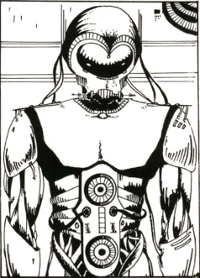 There are several smaller corporations with facilities onTriad and in orbit. All of these companies are limited to the Cassidine systemat present, but are attempting to expand their activities outsystem.
There are several smaller corporations with facilities onTriad and in orbit. All of these companies are limited to the Cassidine systemat present, but are attempting to expand their activities outsystem.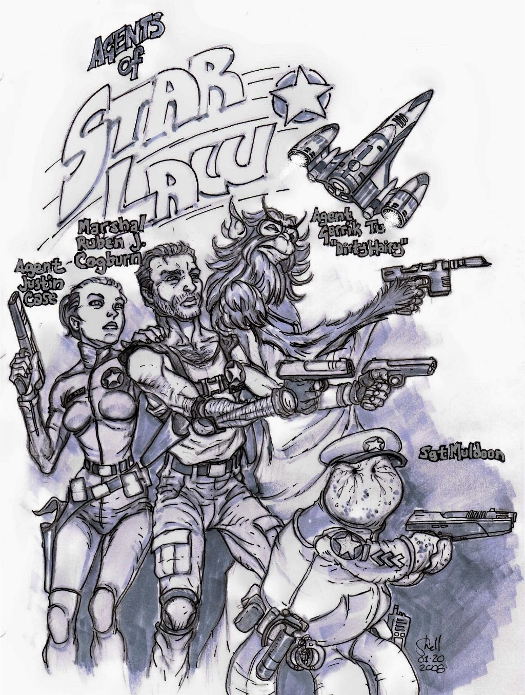
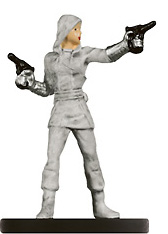
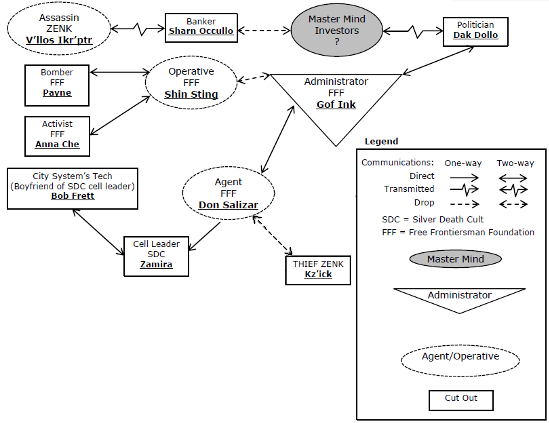
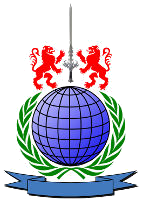 Typical tactics include bombing and assassination
attempts by armed groups. They famously bombed the
Raptor’s Roost night club in Port Royal, a known Royal
Marine haunt.
Typical tactics include bombing and assassination
attempts by armed groups. They famously bombed the
Raptor’s Roost night club in Port Royal, a known Royal
Marine haunt.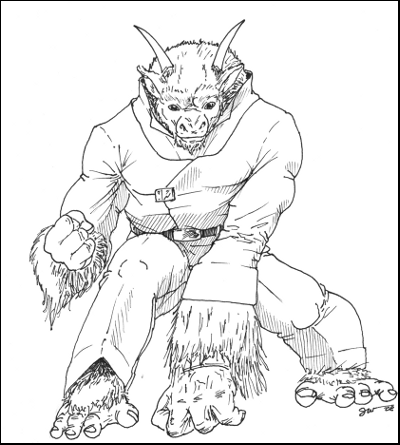





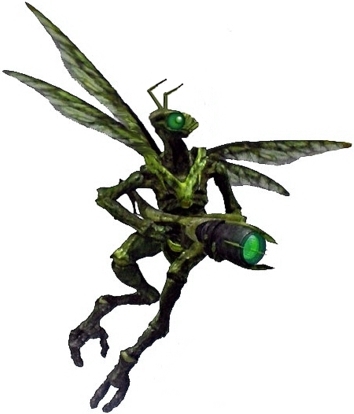




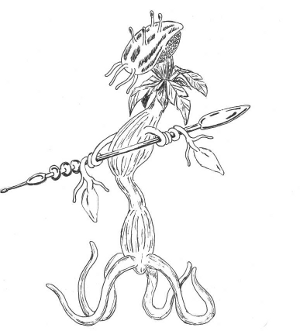
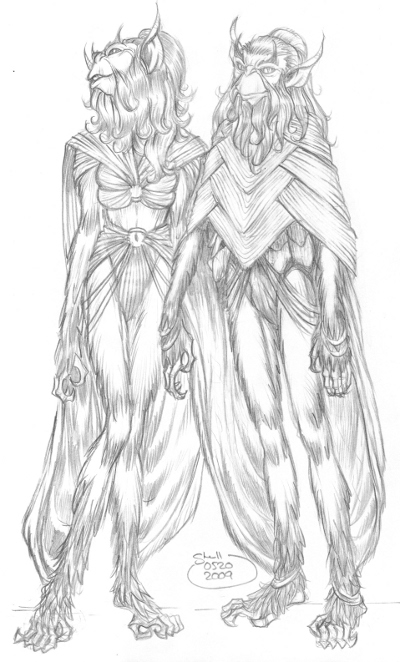
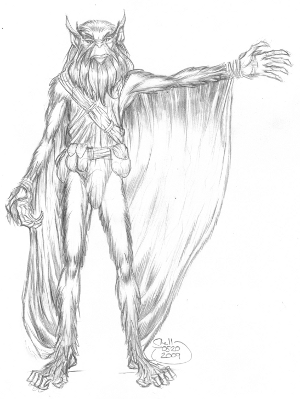
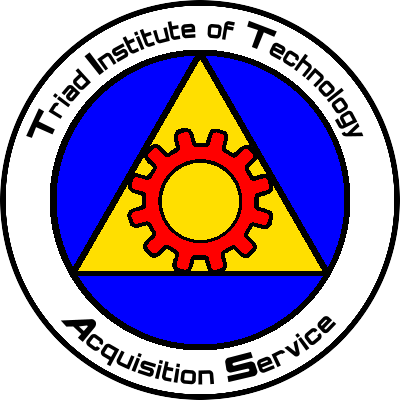
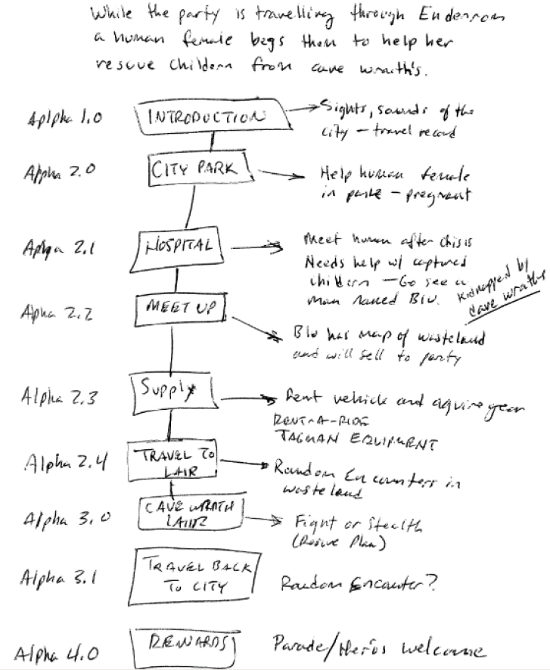
 They can dissolve any living organism quite hastily. Small creatures are dissolved in about 100 turns or 10 minutes. Only when a large creature, up to 75% of its mass, is engulfed the scraper stops to digest its meal, taking 200 turns or 20 minutes. After digesting a victim scrapers secrete a residue ball spitting it, (sounds like a pop) in a random direction up to 10 meters. The sticky ball adheres to almost anything.
They can dissolve any living organism quite hastily. Small creatures are dissolved in about 100 turns or 10 minutes. Only when a large creature, up to 75% of its mass, is engulfed the scraper stops to digest its meal, taking 200 turns or 20 minutes. After digesting a victim scrapers secrete a residue ball spitting it, (sounds like a pop) in a random direction up to 10 meters. The sticky ball adheres to almost anything.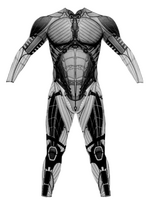
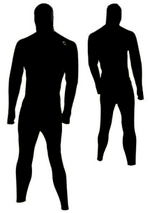
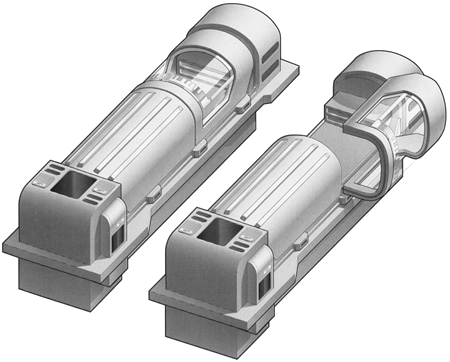
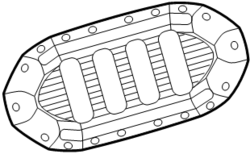
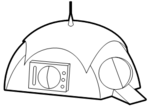
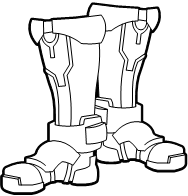
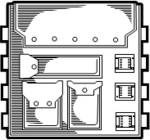

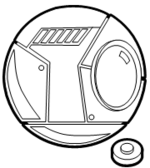


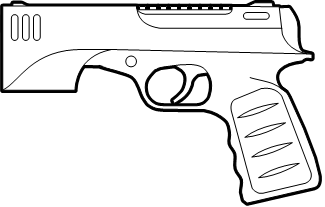 Not every world is so well equipped as the core worlds of the UPF. In fact, on the rim worlds, few beam weapon specialists are sporting the latest laser pistol. They carry a Blastpistol.
Not every world is so well equipped as the core worlds of the UPF. In fact, on the rim worlds, few beam weapon specialists are sporting the latest laser pistol. They carry a Blastpistol.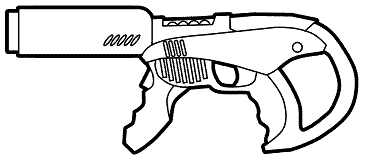
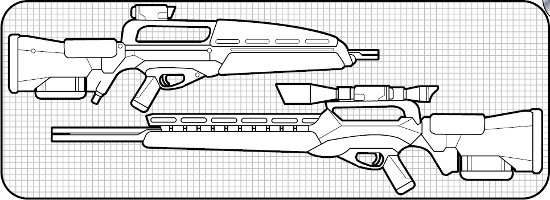
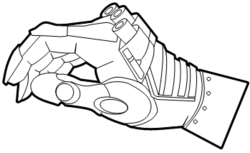

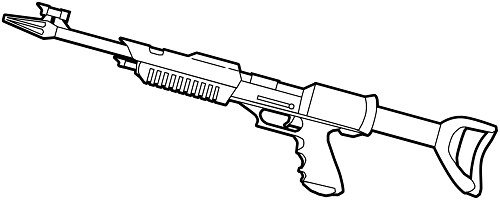
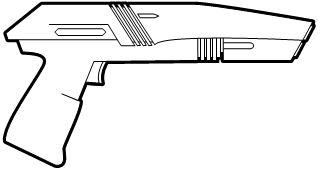
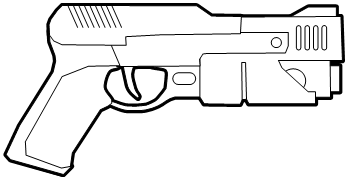

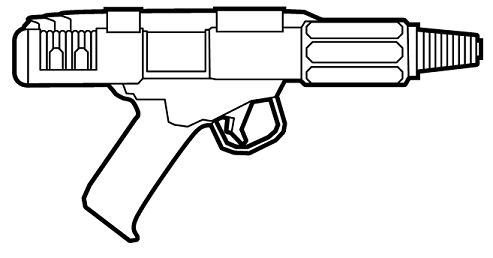
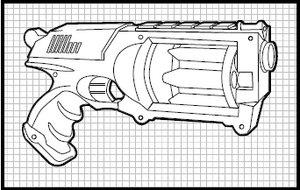


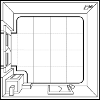
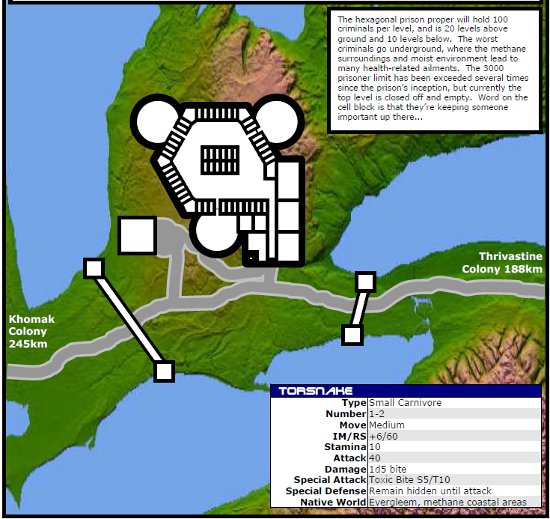
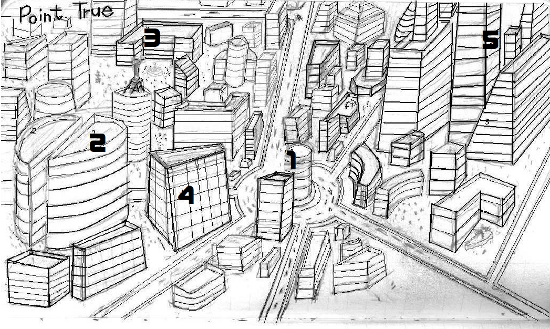
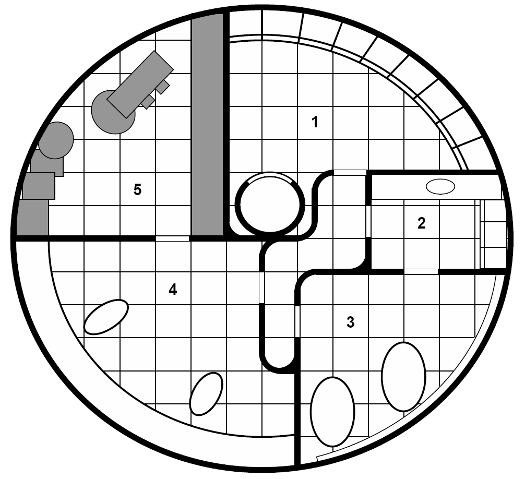
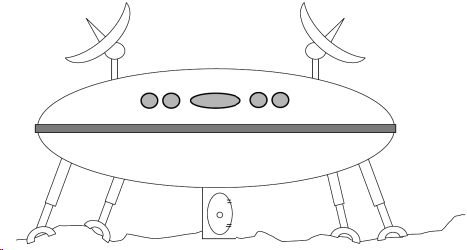
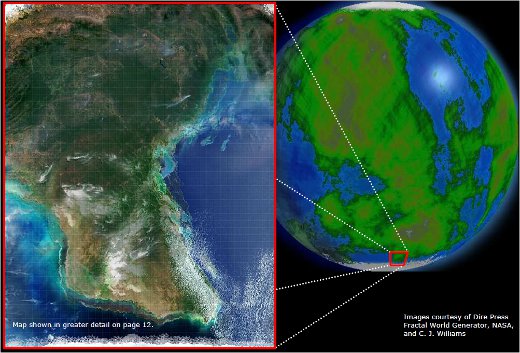
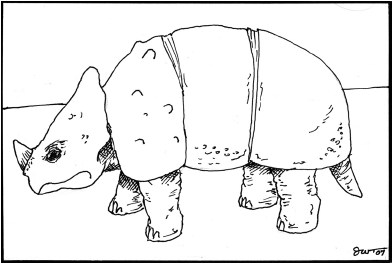
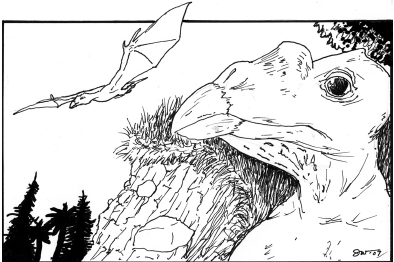
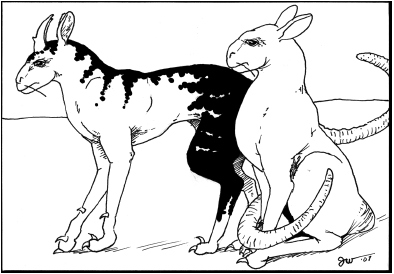
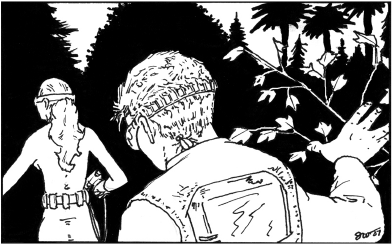
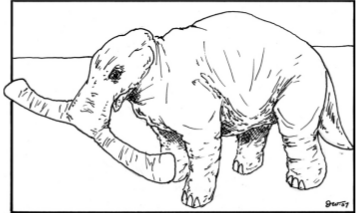
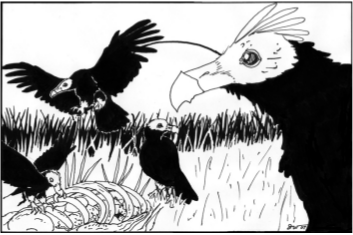

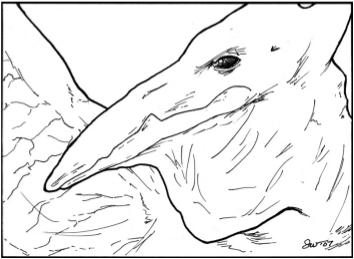
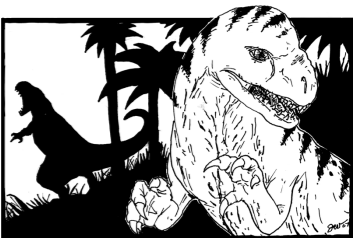
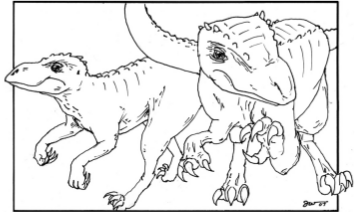

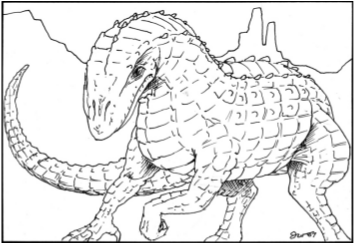 meters tall, and having ridges and a few spikes all over its body, with a course, plated, reddish skin. The terrorsaur releases a blood-curdling screech to terrify its victims into shock and submission. At which point it charges the stationary, mewing, and shivering creature and eats without resistance.
meters tall, and having ridges and a few spikes all over its body, with a course, plated, reddish skin. The terrorsaur releases a blood-curdling screech to terrify its victims into shock and submission. At which point it charges the stationary, mewing, and shivering creature and eats without resistance. 